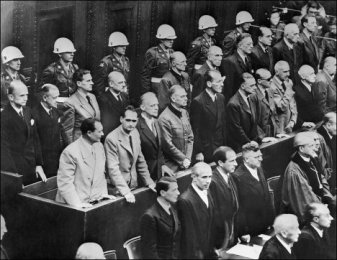As a special Mother’s Day tribute, I thought it only right to give a little bit of background on the character of Max’s mother, Pepe. How she took form, and the qualities she embraces that made her a composite of the “Yiddisha Mama” touted in song and legend.

The original Pepe Golanski – Bessie (Pepe) Stein, my maternal grandmother.
Every character in the book has been named to honor family, friends “close as family,” and/or historic figures who may not be popularly known. All of the children, and most of the current characters with whom Max interacts are currently alive. The others hold people who have graced the planet in memory.
Max’s mother Pessel was actually named for my maternal grandmother, who was Austrian-Hungarian/Romanian by birth, and came to this country with her husband and first two (of nine) children. Her husband’s name was Max (for whom my primary character is named, although my maternal grandfather died years ago — one of the exceptions to my naming of characters). When Pessel arrived in the US, she was given the AMERICAN name of Bessie, which she begrudgingly accepted, although she was never comfortable within its skin. Compromising, she deferred to her nickname — Pepe — which is carried throughout the book.
So . . . to review. Max is named after my maternal grandfather, and Max’s MOTHER is named after my maternal grandMOTHER. (Ahh, the luxury of “poetic license” allowed writers!) With me so far?
In the book, fictional Pepe was born to be a mother (as was my actual grandmother). She embraced every opportunity to love, teach and support each of her children: Moishe (Max), Izzy (Isadore — incidentally, named after my own father), and Miri (Miriam), named after my maternal Aunt Mary. Her husband Julius (Max’s father) is a kosher butcher. In my family the real Julius was my paternal grandfather, who was, in fact such a butcher. STILL with me?
As a Mother’s Day tribute, I’d like to share a snippet from a scene in the book to bring you back to Max’s world as a child growing up in Poland — when the Jewish world of his existence was still balanced (however precariously), and logically unfolded within an environment filled and defined by cultural traditions, faith and the love of family. It was a place where a Yiddisha Mama was revered, serving as the center of home, family and community. So, without further ado, it is my honor to introduce Pepe Golanski, butcher’s wife, and Max Golanski’s beloved mother . . . .
(NOTE: Quoted text is copyright protected by Sue Ross, 2012 and remains the exclusive property of the author. Use of this material without permission is prohibited.)
While Julius worked, Pepe would chat with the ladies who came by just as much to schmooze and trade recipes as to purchase meat. Once she had completed her chores both in the shop and the family’s second floor apartment, she’d join her contemporaries in discussing the latest gossip of the day. Always taking charge of such discussions to make certain the women in her shop shared information, rather than malicious rumors, Pepe kept a firm grip on such conversations, chiding those who sought out juicy details that might be hurtful to others.
“So, nu? Marta?” she’d say. “You wouldn’t sleep as soundly as you do each night if you didn’t know the details of Yonkel’s failing as a husband to poor Chava?”
Pepe’s belief that petty rumors were unnecessary, unkind and unworthy of attention made her greatly respected throughout the neighborhood. Her use of discretion was legend and she was fond of reminding everybody that, “Small minds produce the world’s biggest headaches.” A traditional balaboste, Pepe was a highly disciplined housewife and adoring mother.
“You’d think the sun rose and set upon the heads of those three children,” Julius would often say, shaking his OWN head when she’d over-indulge them.
“But, my beloved husband, the sun DOES rise and set upon their heads,” she’d reply, her face alive with a mother’s love. Yet, she was also the undisputed disciplinarian of the family.
“Children, off to school with you,” Pepe would announce the second the last parcel of dark rye bread had disappeared from the table and her husband had left for work.
“Miri, I told you that dress needed a few stitches at the hem. A lady you should be. I’ve never known such a girl as you. Now run and change. Moishe, those fingernails look like those of beggar. Do I need to take a brush to them myself? Go scrub them again. I’ll not have a child of mine going to school with dirty fingernails. Izzy! Now where is that child?” she’d mumble, full well knowing that her eldest had already bounded down the stairs to wait for his siblings in front while he sought to catch a peek of the attractive girl who lived next door.
Moishe remembered how the delicate fragrance of baking challah, and meat-filled, sweet cabbage wafted from her apron. Perfumed by onions, Pepe’s large, peasant hands were moist and supple from folding schmaltz into her chopped liver. But, Moishe most loved her laugh. It shook loose from deep inside until her earrings danced, tears flowed from her eyes, and her ample bosom bounced up and down. What Pepe lacked in a formal education was more than adequately covered by her more pragmatic schooling as a perceptive student of life.
“People are my books,” she told her children, and would refer frequently to her living library when fielding questions about the world. Pepe’s mish-mosh of characters seemed to hold answers from whatever might ail, to putting together a school report, to the most attractive ways of braiding the flaming red hair of the rambunctious Miri.
Born Pessel Libe she was raised in Galicia in the town of Shoenfolo in Maremosesiegatz, where she spent her childhood swimming in the river that divided Austria from Hungary. Pessel was her Jewish, or Yiddish name, but she preferred her nickname, Pepe. In addition to being the best swimmer and fastest runner, she was also known for her culinary skills, the result of early training by her own mother, Chana, who was well accomplished in the art of Jewish cooking.
“Pessel, to catch a husband, you should spend more time on your brisket and less time looking in the mirror!” Chana would say.
As catching a husband was top on every young Jewish girl’s list, Pepe watched intently, taking mental notes of what made up a “pinch,” or constituted a “dash.” While not the sole reason, her cooking was certainly part of the reason she so quickly won the affection of a husband who was partner, provider, and father to her children.
I dedicate today’s entry to Max’s Pepe — my maternal grandmother, Pepe (who died before my birth) — my own beloved mother, Rose (whom I miss dearly since her passing several years ago at the age of 91. Mom would have so enjoyed being part of this journey) — and all mothers who bring children into the world, and lead them through its often confusing waters.
HAPPY MOTHER’S DAY!
– Remembering Mom. Rose Ross with Baby Sue (a long time ago. My skin was definitely too big for me).























